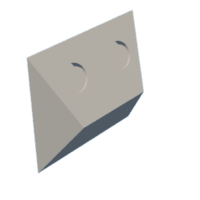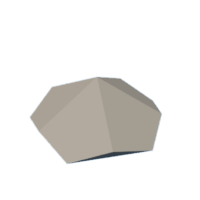Introduction: Illustration of All Platonic Solids in One
In this little instructable I present how to demonstrate the connections between all the 5 Platonic solids in one.
The idea came from my wife. Originally she made this from paper and velcro. This model is made of 3d printed plastic elements, 104pcs magnets and some glue.
The model helps to understand the relationships between the Platonic solids.
Step 1: 4 Little Tetrahedrons + 1 Octahedron = 1 Large Tetrahedron
From 4pcs little tetrahedrons and an octahedron we can build a large tetrahedron if their sides are equal.
So we need to print out 4pcs tetrahedron and an octahedron.
Glue 10mm x 1mm round magnets to the gaps. Use cyanoacrylate based or any suitable glue. (The hot glue is not suitable, it doesn't stick well on magnets.)
Take care about the polarity of the magnets otherwise it will be hard or impossible to assemble them together.
To observe the polarity I marked the same polarity side of all magnets. This way the marked and not marked magnet sides stick together.
By gluing keep always the marked sides towards the middle of the Octahedron, this way the 'layers' will allways stick together.
Step 2: Cube
Now we need 4pcs regular triangle based pyramids with 90degree peaks. They extend our large tetrahedron to a cube with 6 regular square faces.
Attachments
Step 3: To Dodecahedron
Adding 6pcs of the next solid with the square in one face to the faces of the cube we get a dodecahedron with 12 regular pentagonal faces.
Attachments
Step 4: To Icosahedron
The last step is to extend our dodecahedron to an icosahedron. Add 12pcs of extension with the regular pentagonal faces to the dodecahedron and we get an icosahedron with 20 regular triangular faces .
Attachments

Participated in the
STEM Contest

















